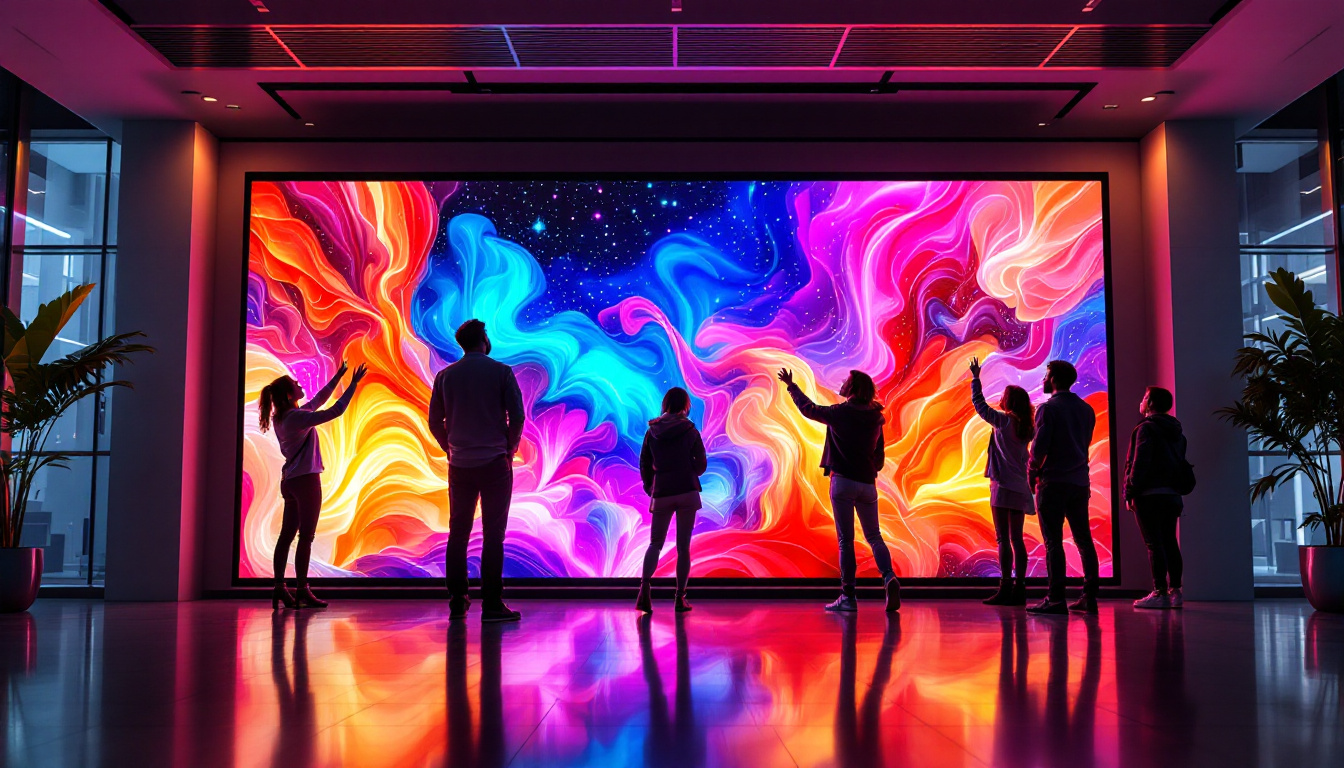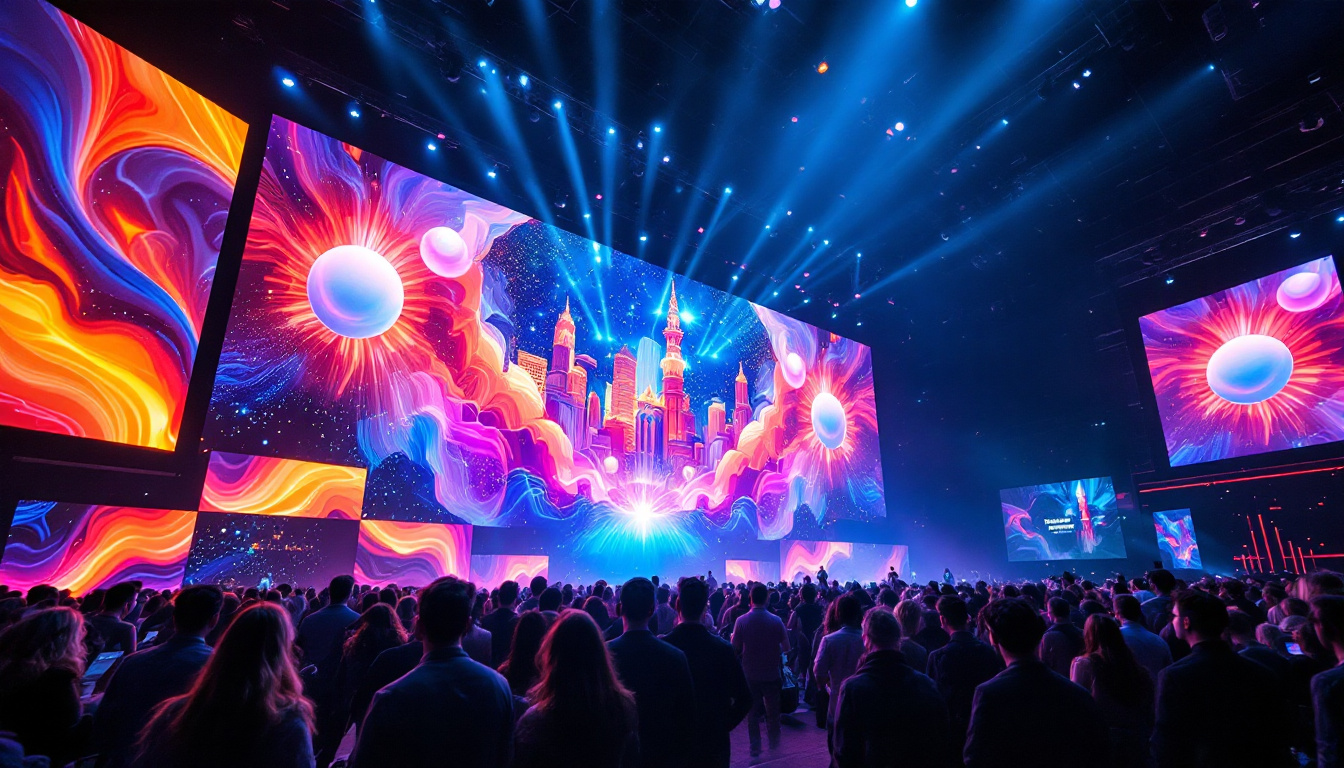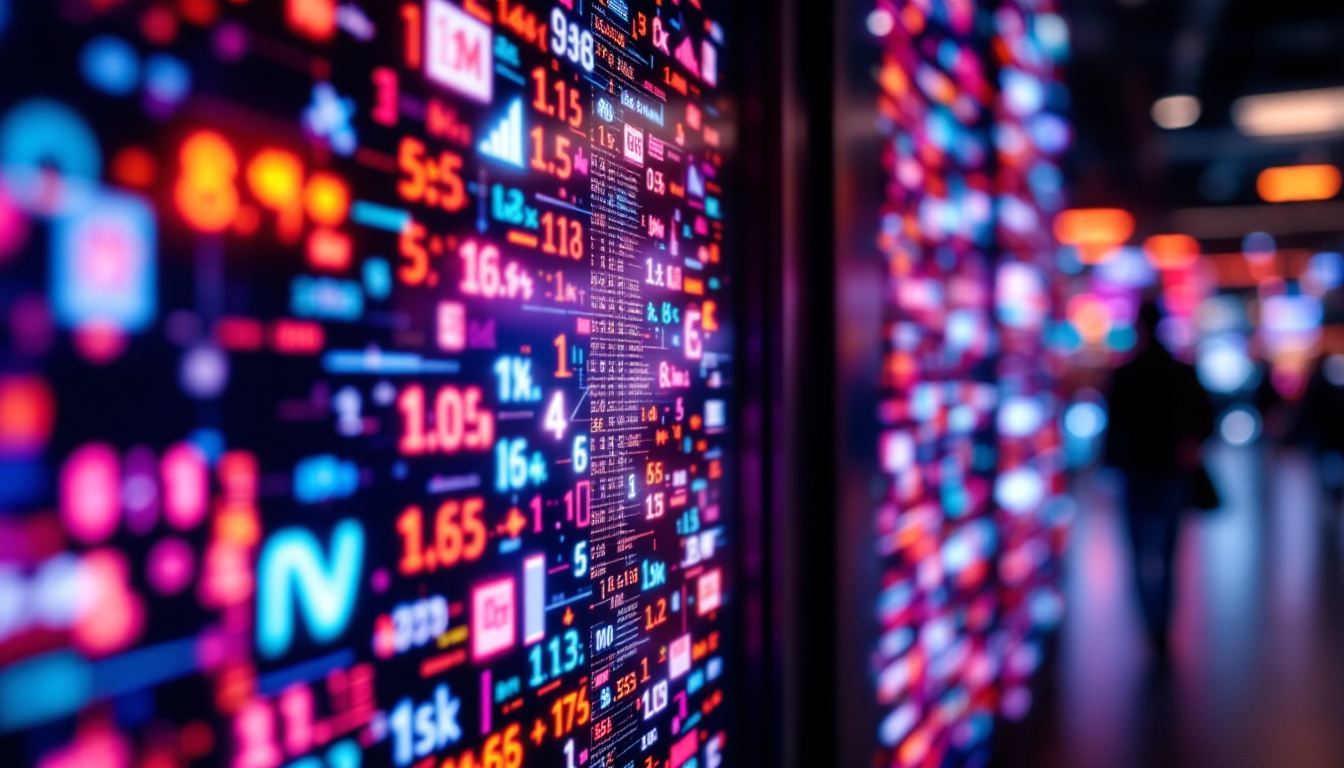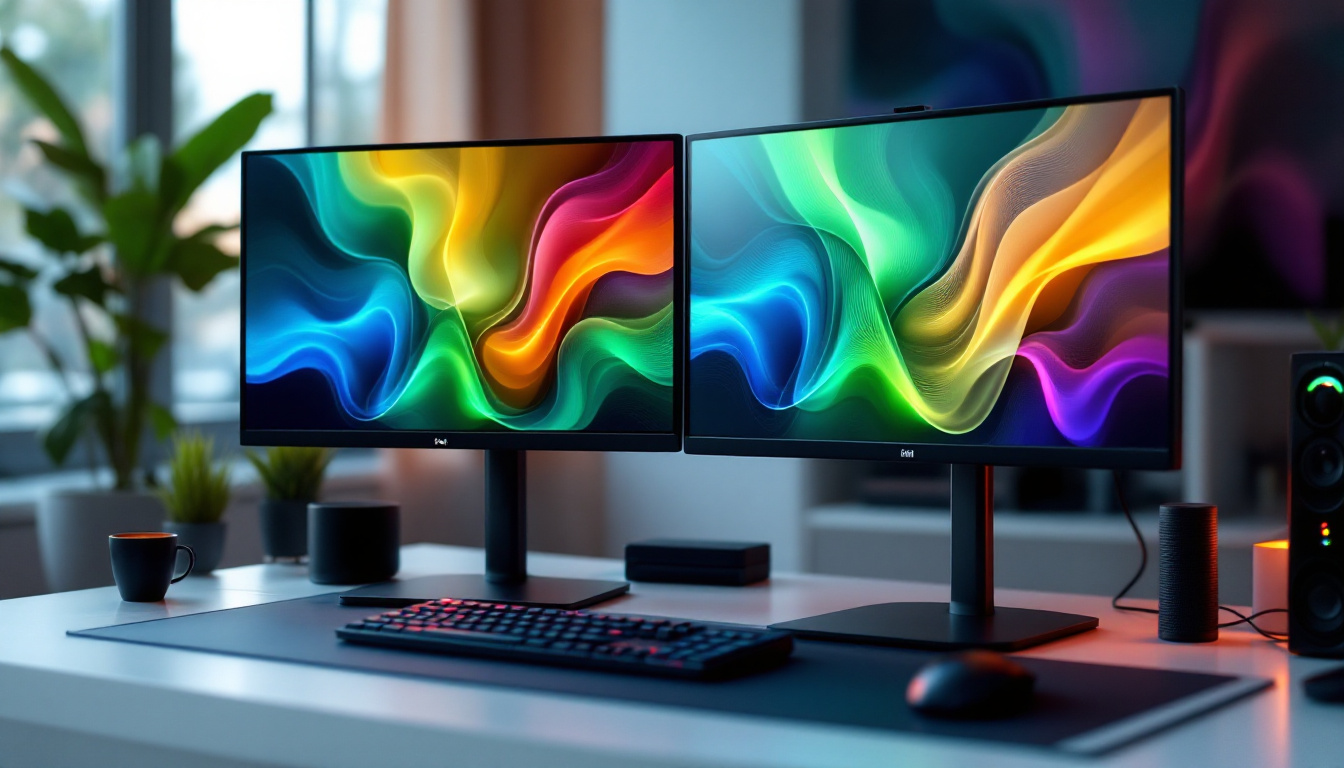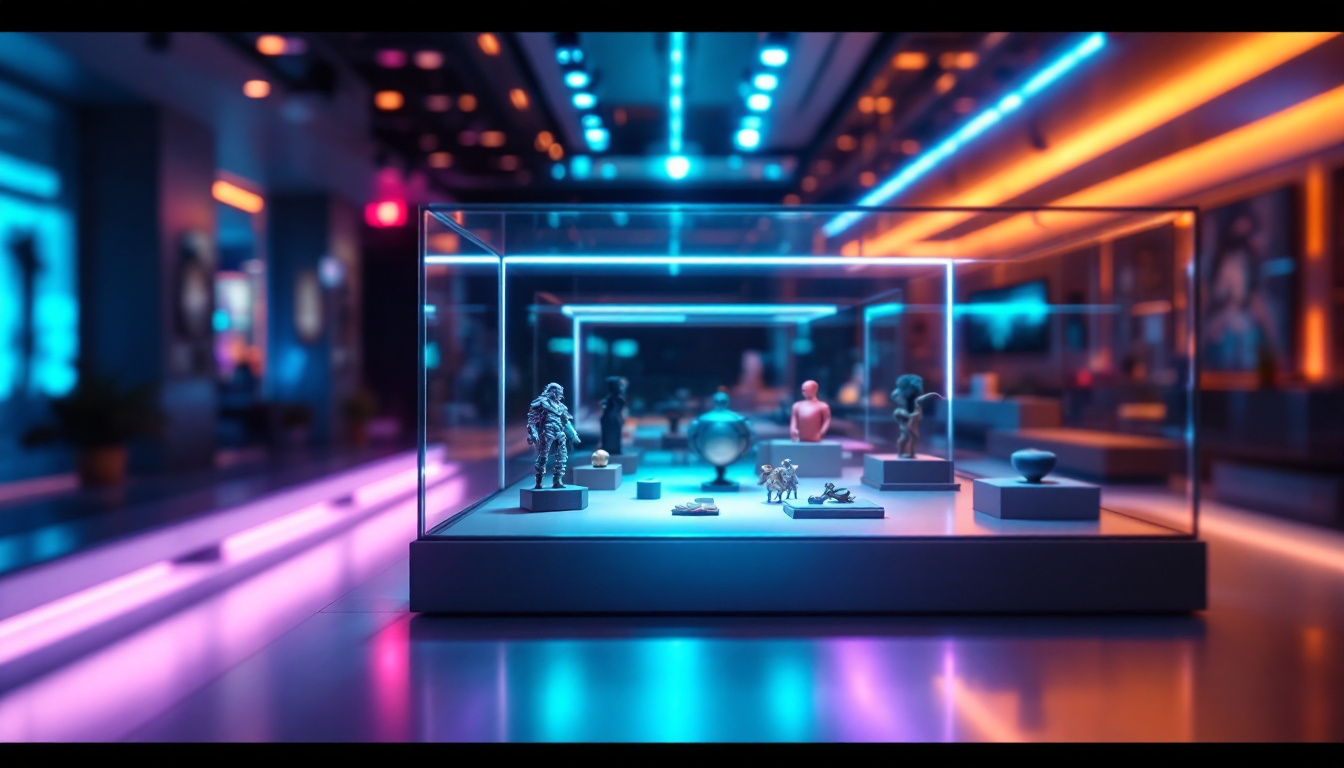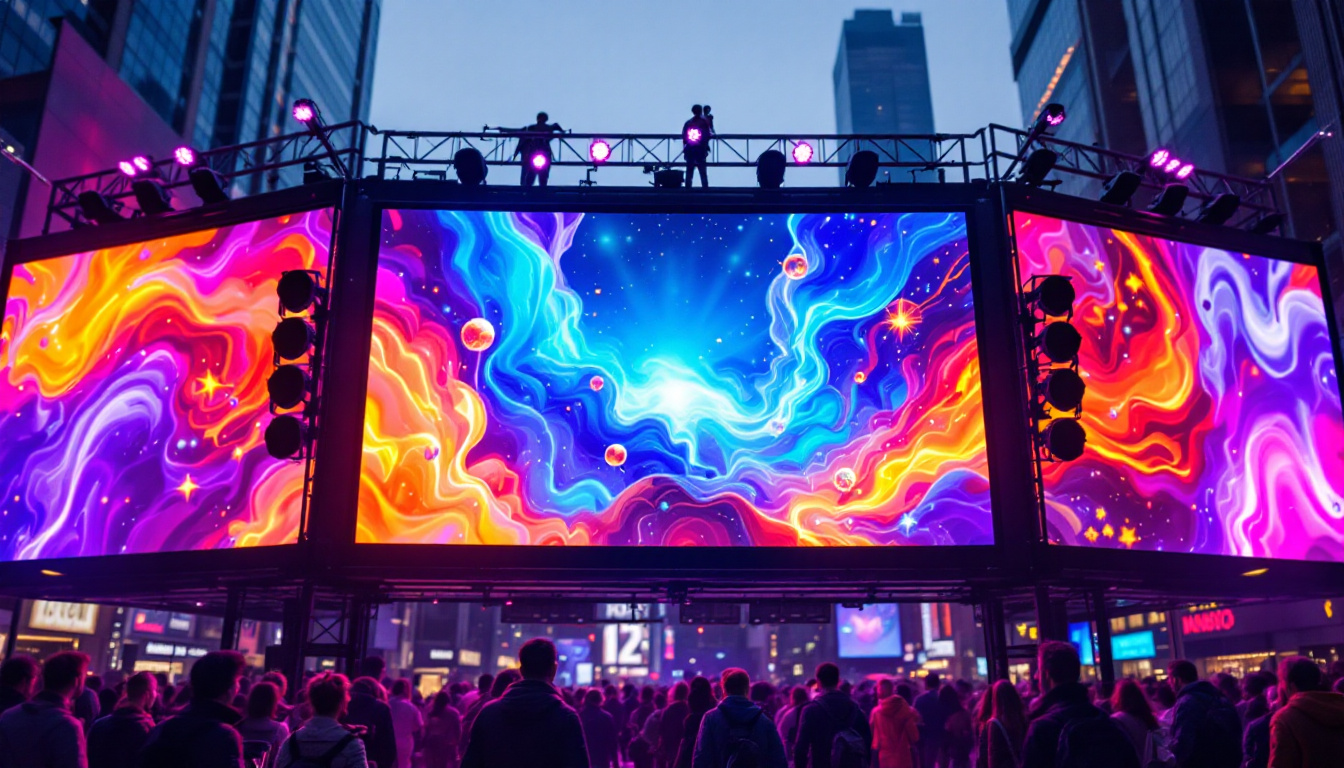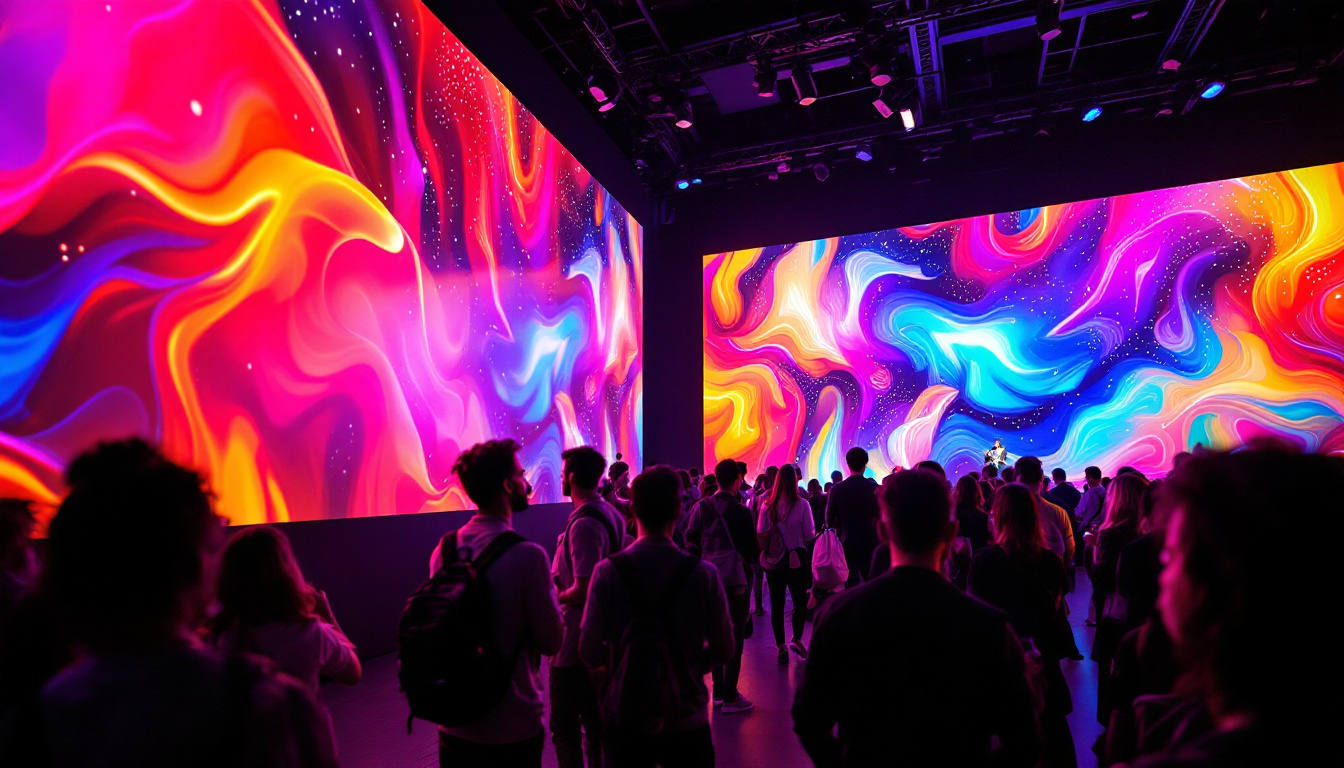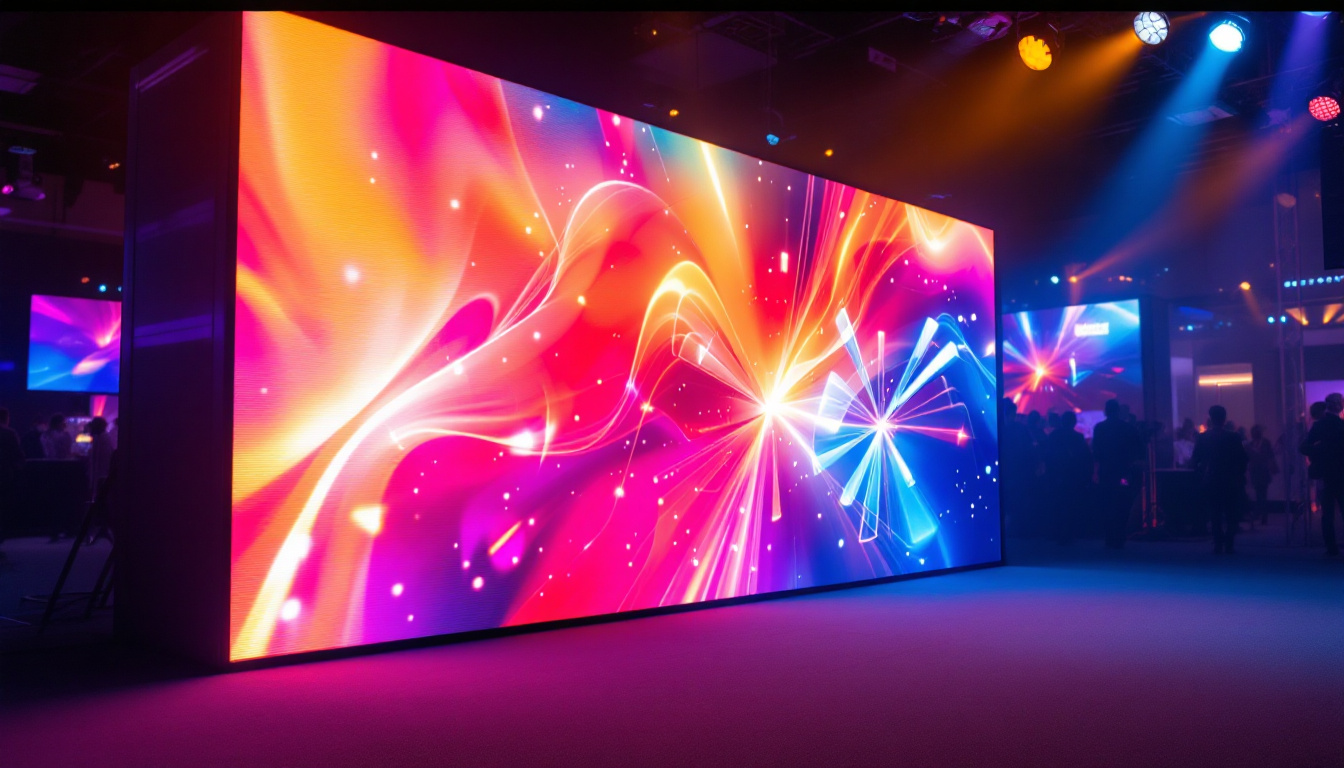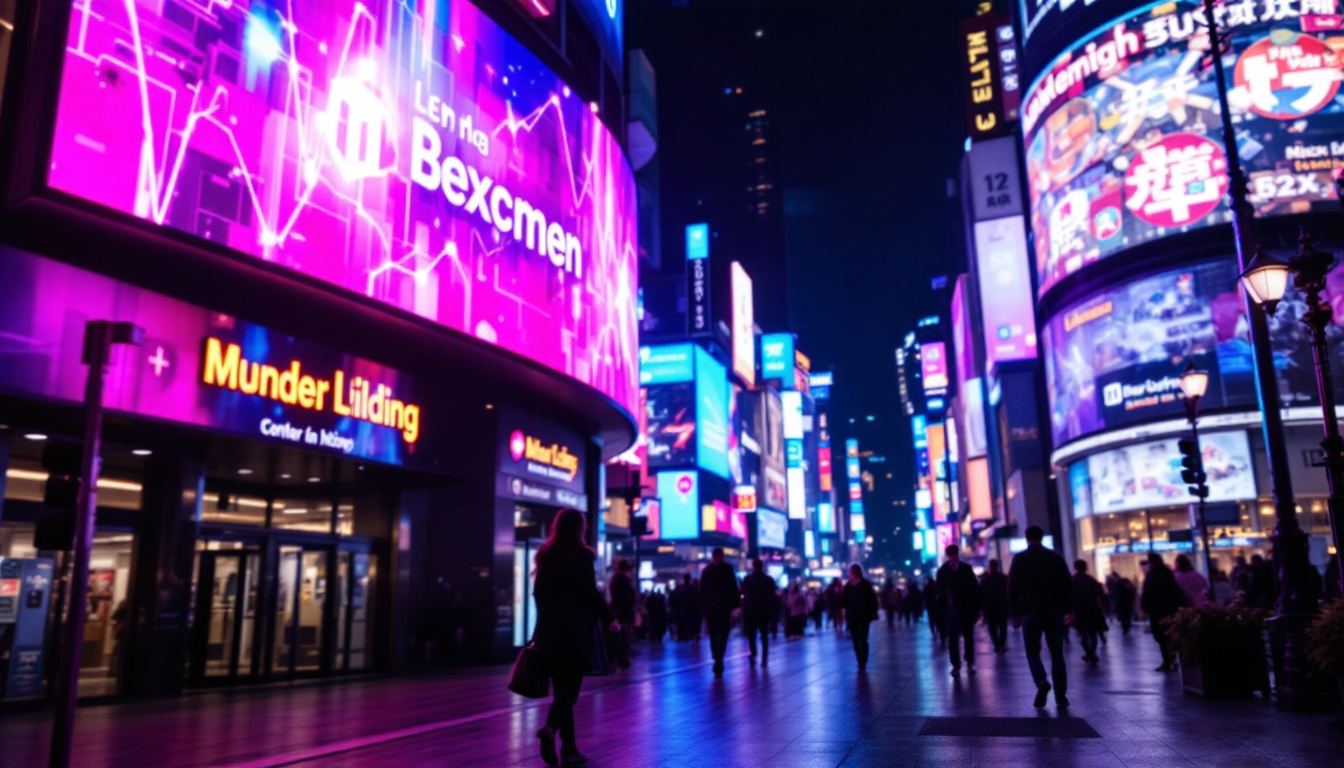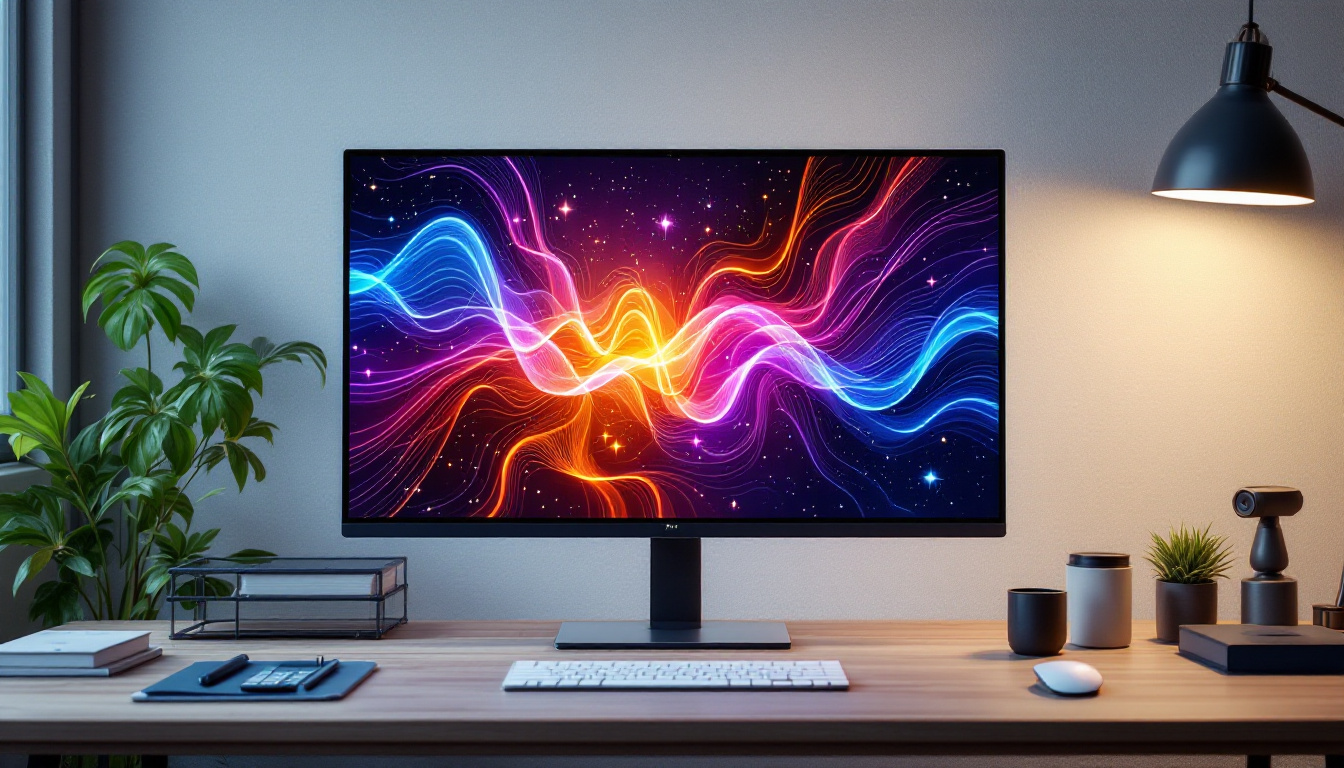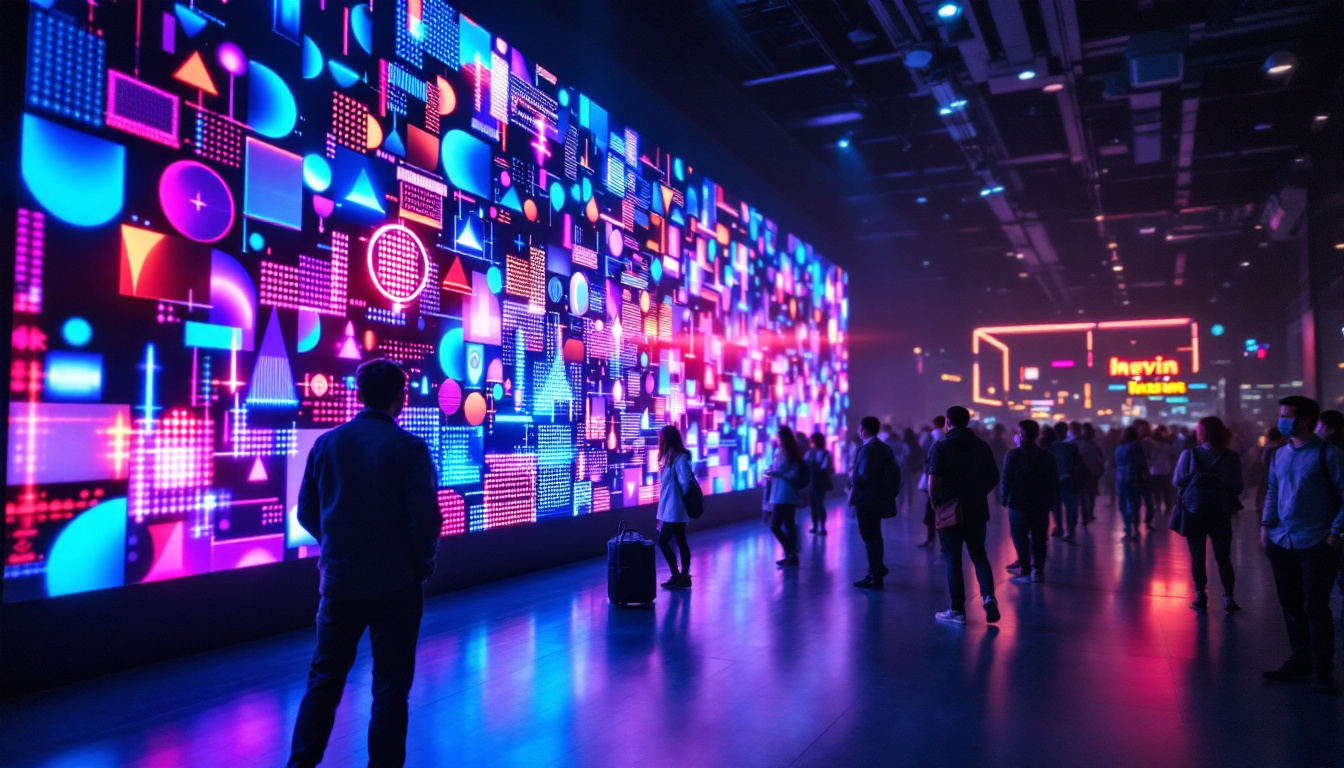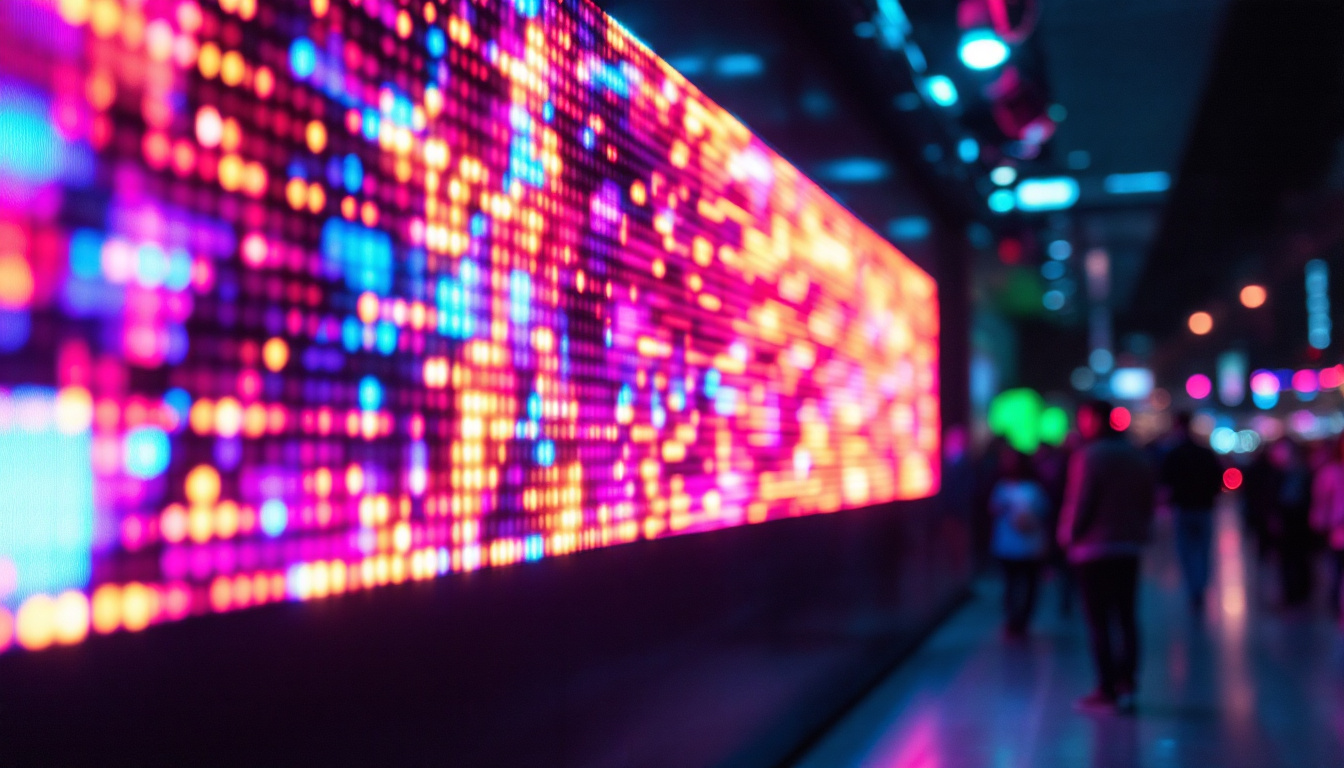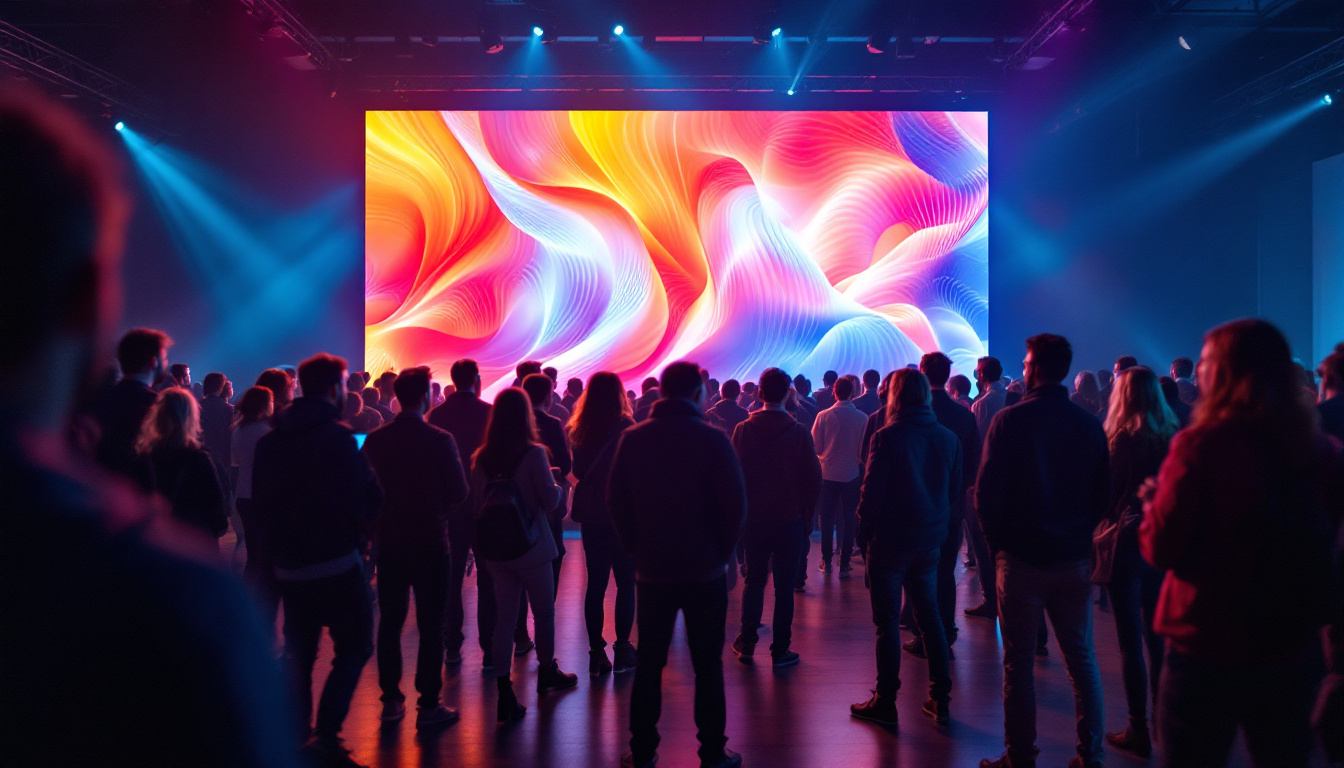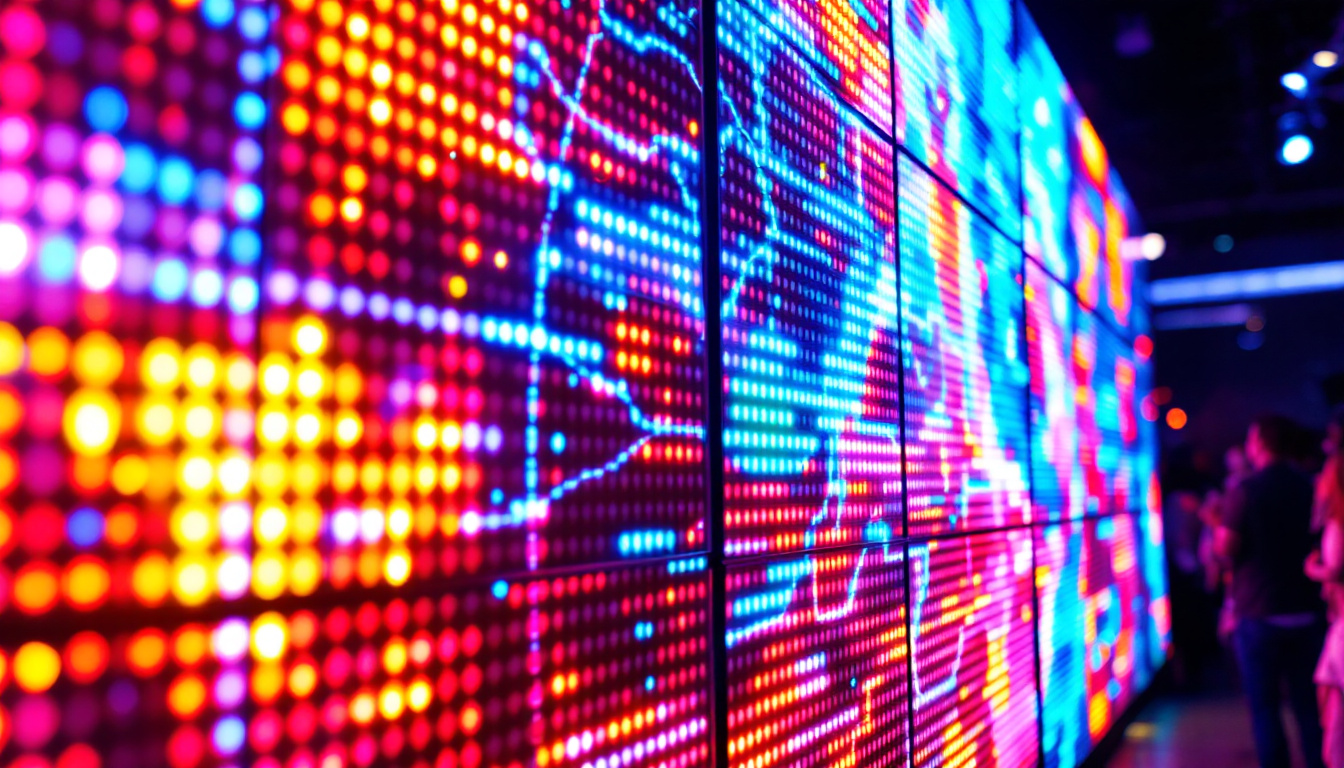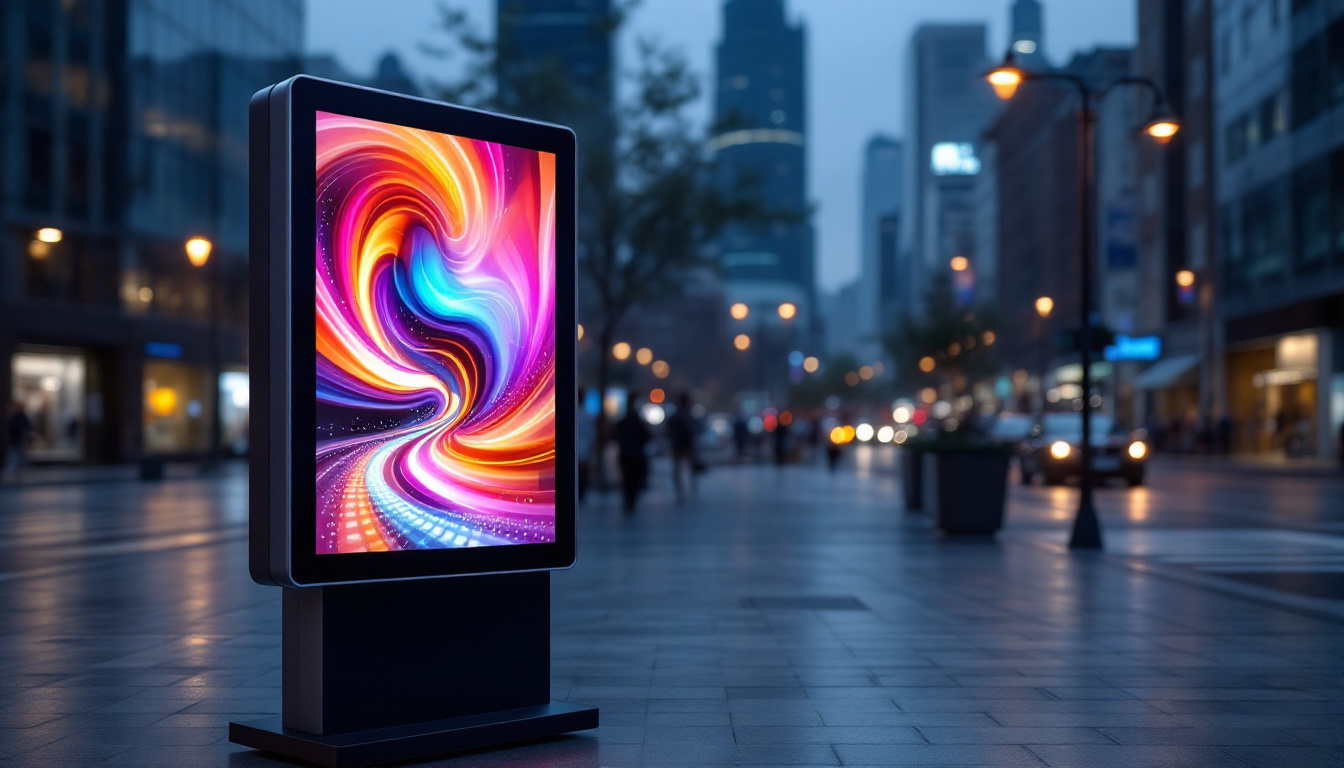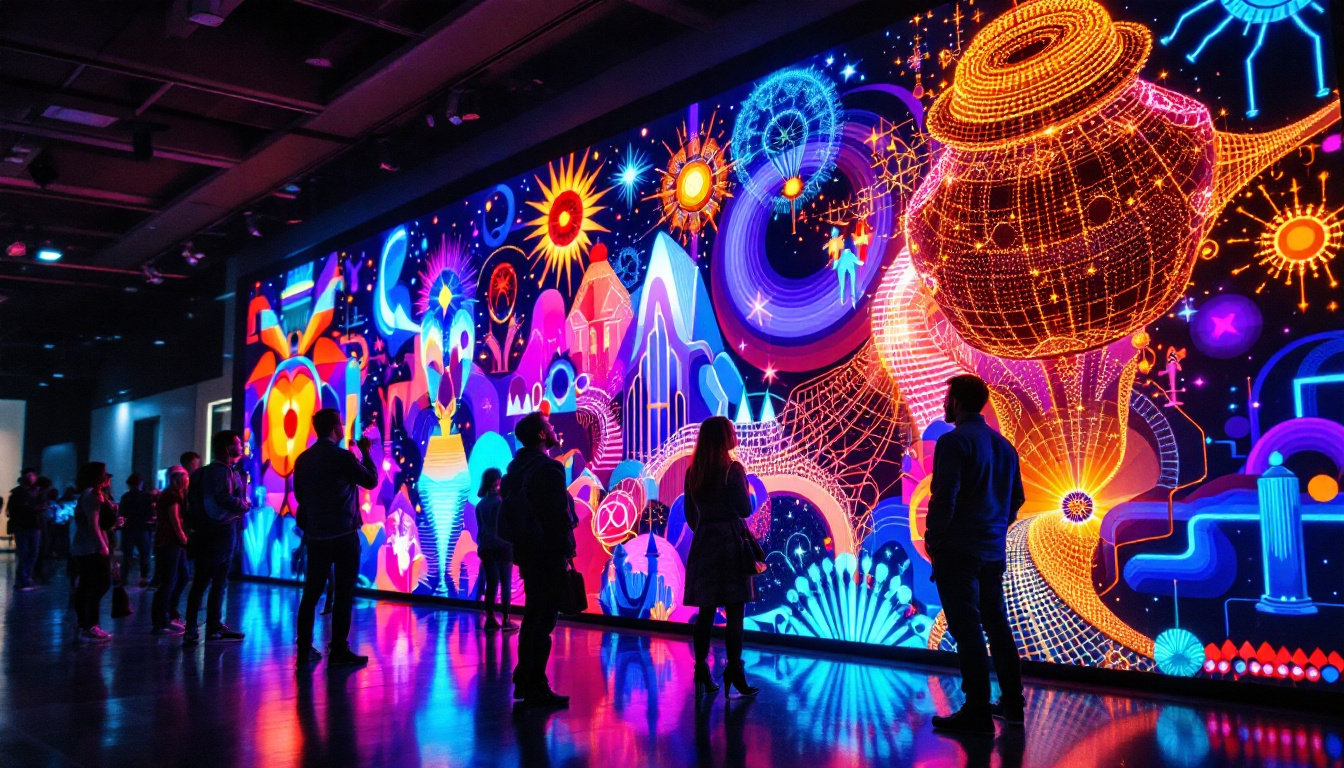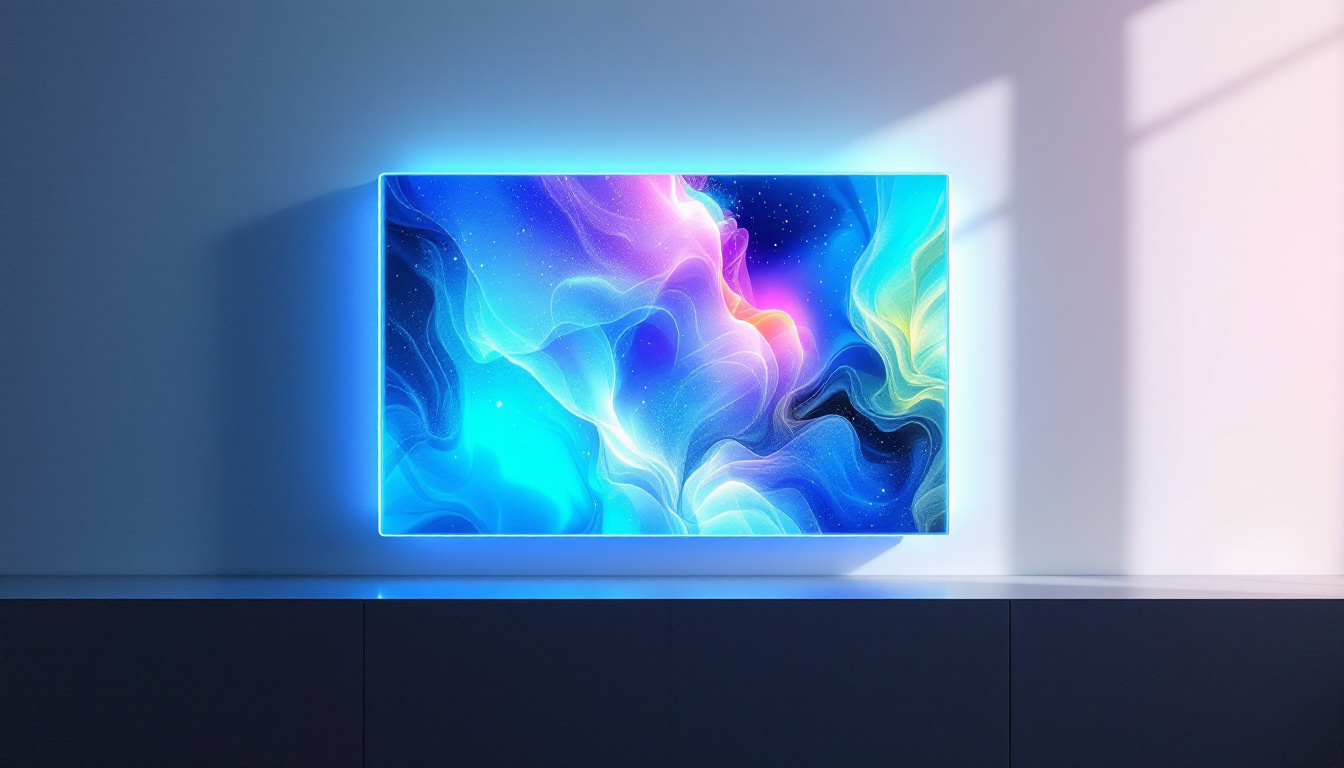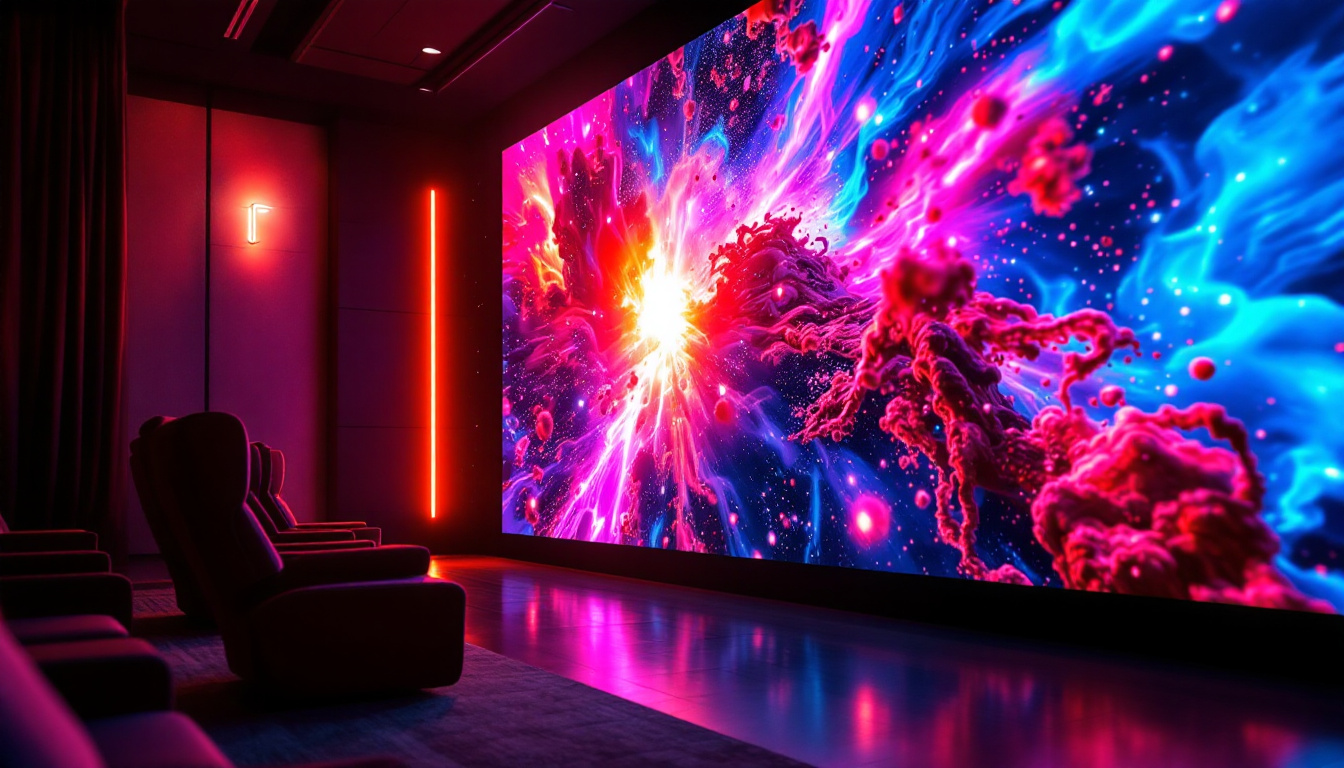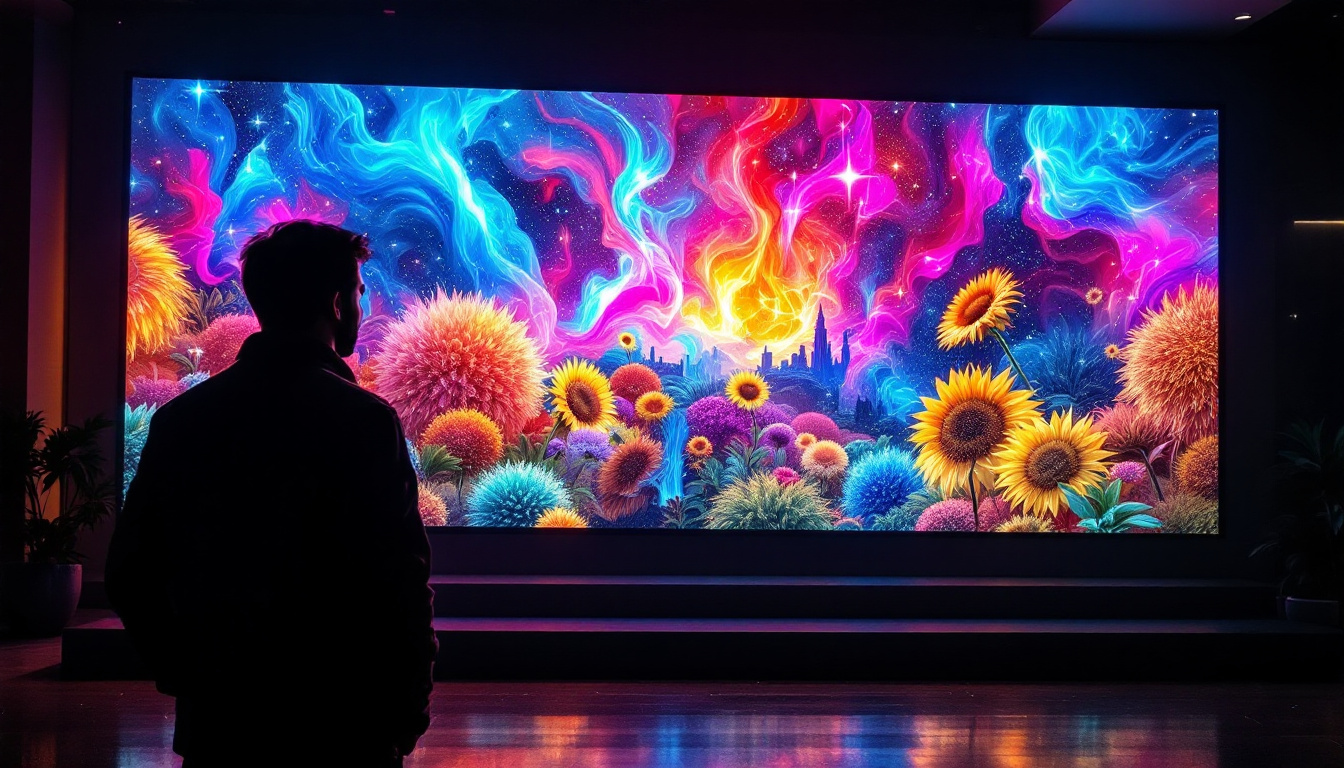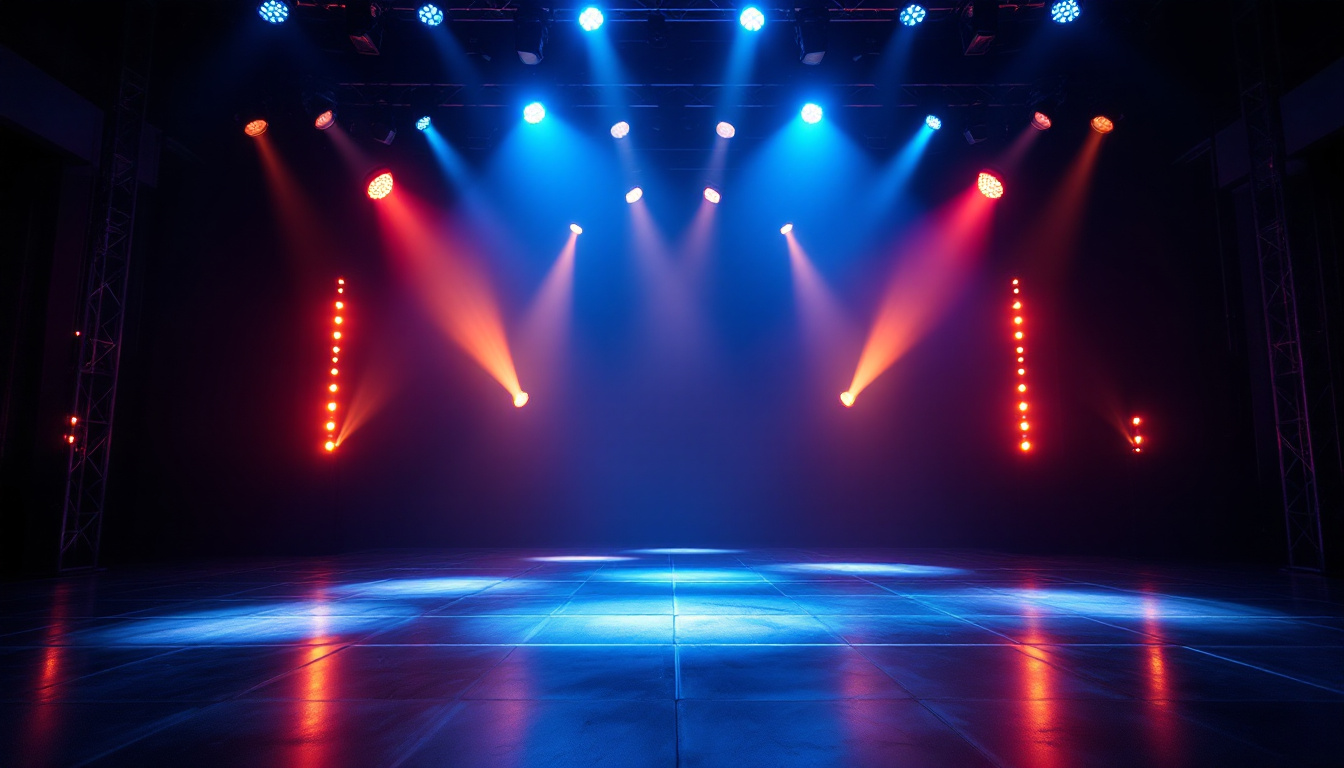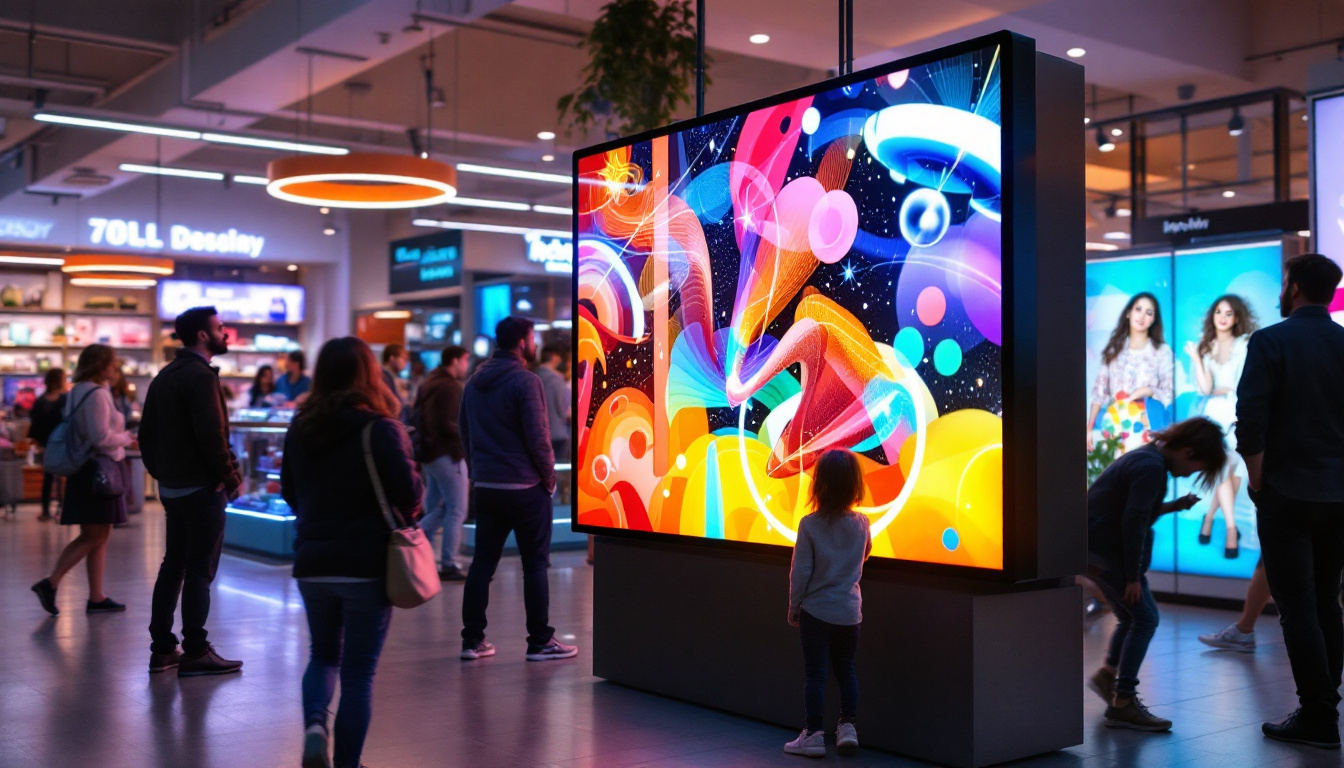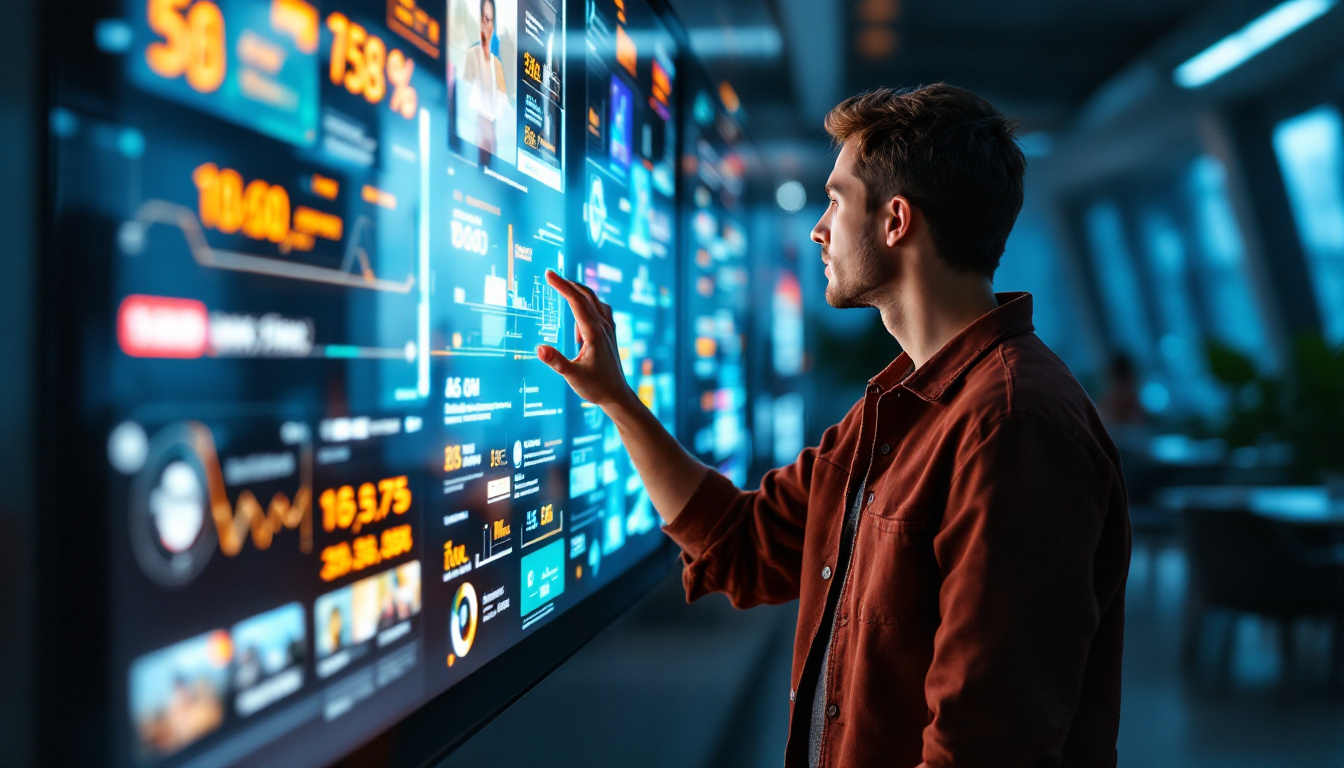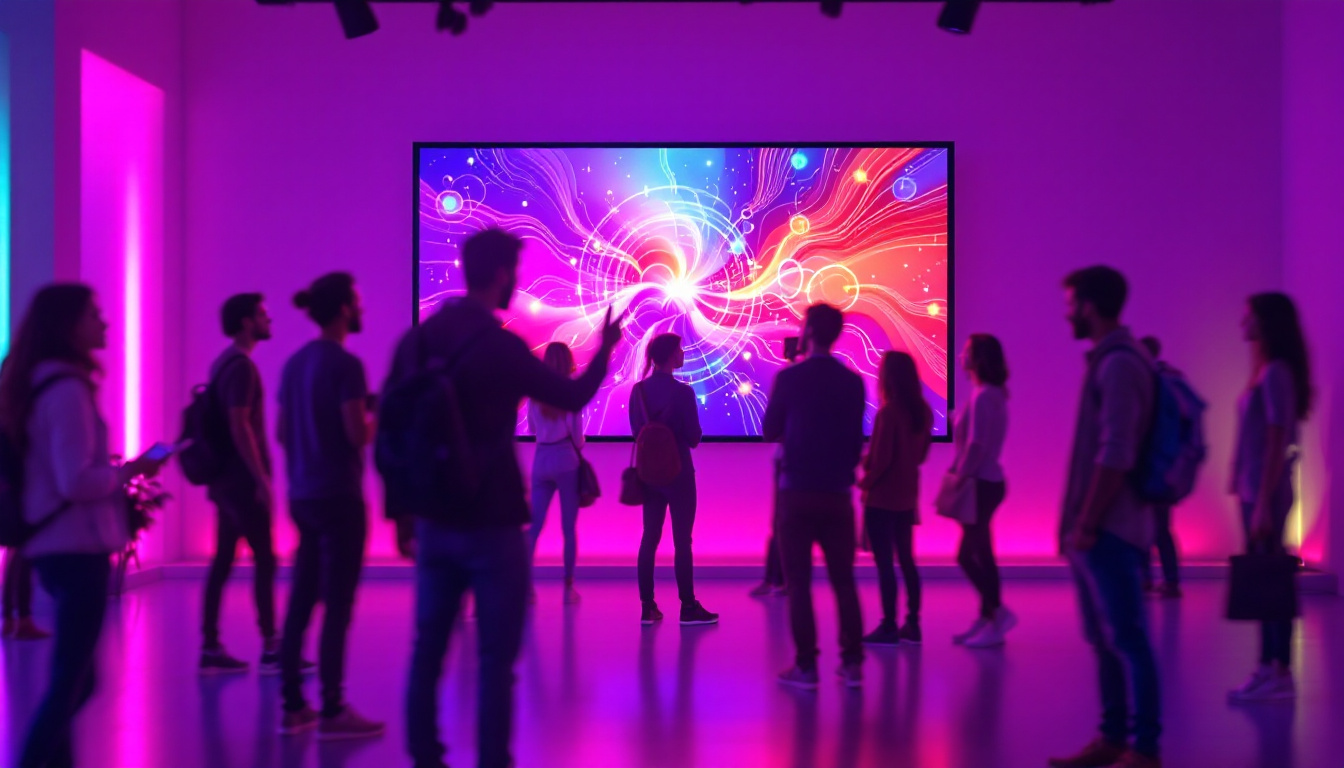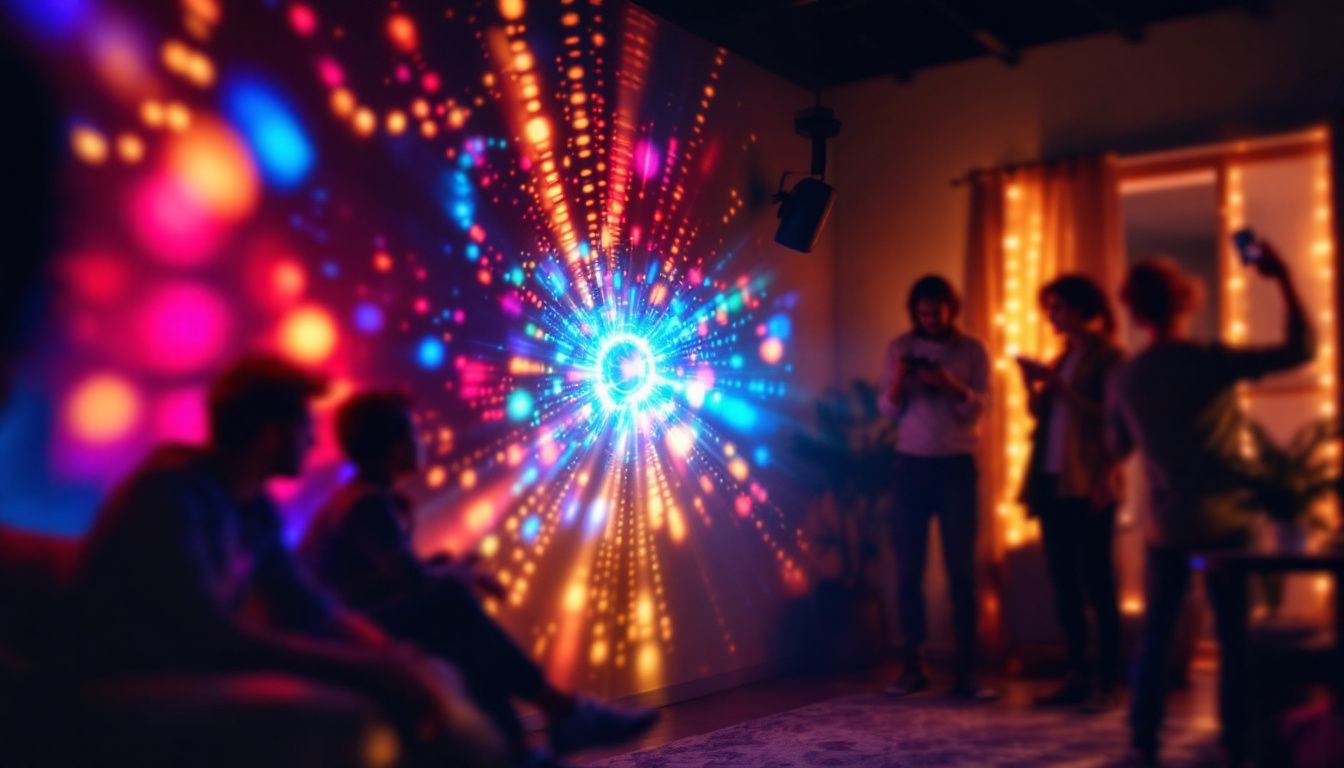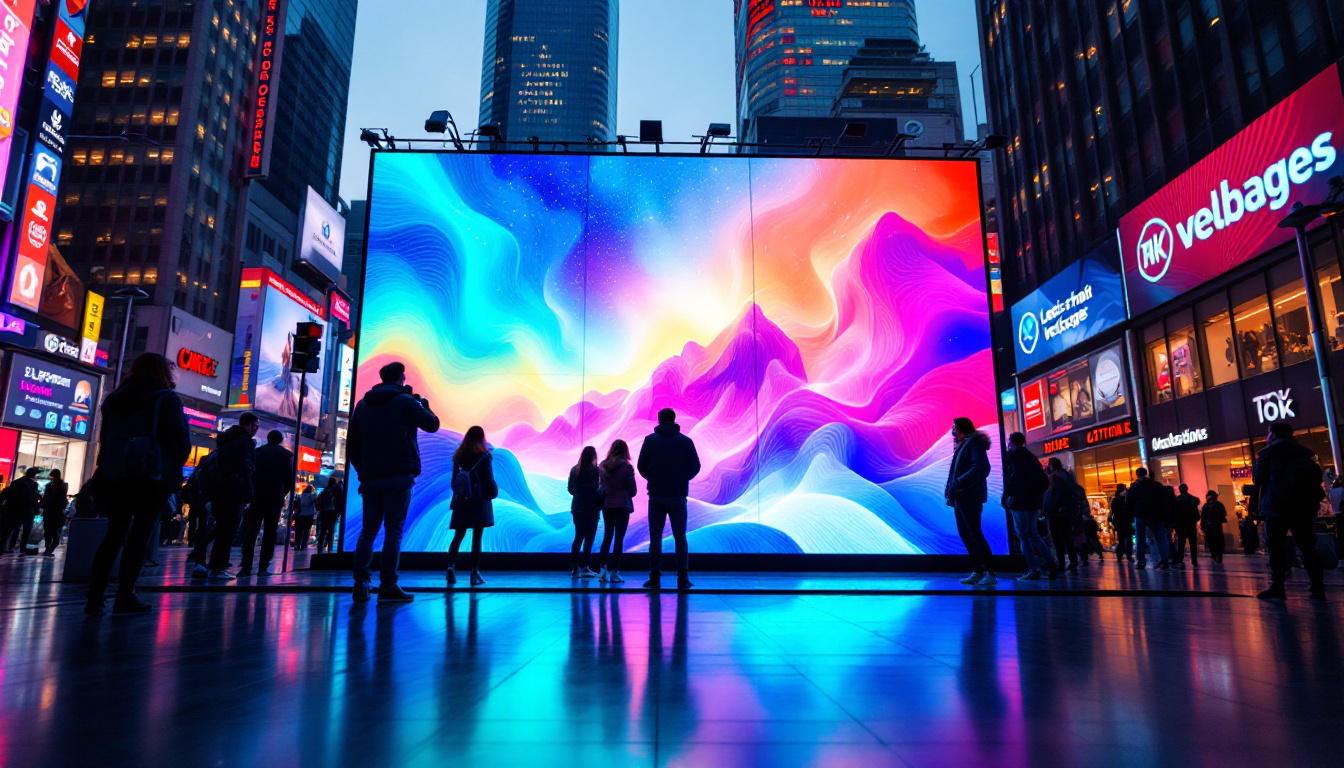In the ever-evolving world of technology, digital wall displays have emerged as a powerful tool for communication, advertising, and information dissemination. Among the various types of displays available, LED (Light Emitting Diode) displays stand out for their versatility, brightness, and energy efficiency. This article delves into the intricacies of LED displays, exploring their technology, applications, benefits, and future trends.
Understanding LED Technology
LED technology has transformed the way visual content is presented. At its core, an LED display consists of numerous tiny light-emitting diodes that work together to create images and videos. The technology behind LED displays is relatively straightforward, yet its applications are vast. From advertising to entertainment, the versatility of LED technology allows it to adapt to various settings, making it an essential component in modern visual communications.
How LED Displays Work
LED displays operate by using a matrix of red, green, and blue (RGB) diodes. When these diodes are illuminated in varying intensities, they combine to produce a wide spectrum of colors. The ability to control each pixel individually allows for high-resolution images and smooth video playback. This pixel-level control is crucial for creating dynamic visual experiences that can engage audiences effectively.
In addition to traditional RGB configurations, newer technologies such as full-color LED displays utilize advanced techniques like pixel pitch and dynamic refresh rates to enhance image quality. This makes them suitable for various environments, from outdoor billboards to indoor advertising displays. Furthermore, innovations in LED technology have led to the development of energy-efficient models that consume less power while delivering brighter and more vibrant visuals, which is a significant advantage in both commercial and residential applications.
Types of LED Displays
There are several types of LED displays, each tailored for specific applications. The most common types include:
- Indoor LED Displays: These displays are designed for use in controlled environments, such as shopping malls, airports, and conference centers. They typically have a higher pixel density, resulting in clearer images viewed up close. Indoor displays often feature advanced color calibration technologies that ensure consistent color accuracy across the screen, making them ideal for presentations and events.
- Outdoor LED Displays: Built to withstand harsh weather conditions, outdoor LED displays are often used for advertising billboards and sports arenas. They are brighter and more durable, ensuring visibility in direct sunlight. Many outdoor models also incorporate weather-resistant features, such as protective coatings and robust housing, to enhance longevity and performance in various climates.
- Transparent LED Displays: These innovative displays allow for visibility through the screen while still displaying content. They are commonly used in retail environments to showcase products without obstructing the view. The unique design of transparent LED displays enables businesses to create eye-catching advertising that seamlessly integrates with their physical space, enhancing customer engagement while maintaining an open atmosphere.
Moreover, the emergence of flexible LED displays has opened new avenues for creativity in design. These displays can bend and curve to fit unconventional shapes, allowing for unique installations that capture attention in ways traditional displays cannot. As technology continues to evolve, the potential for LED displays in art, architecture, and immersive experiences is becoming increasingly apparent, pushing the boundaries of how we perceive visual media.
Applications of LED Displays
LED displays have found their way into various industries, revolutionizing the way information is shared and consumed. Their adaptability makes them suitable for numerous applications.
Advertising and Marketing
One of the most prominent uses of LED displays is in advertising. Businesses leverage the vibrant colors and dynamic content capabilities of LED screens to capture the attention of potential customers. Digital billboards can display multiple advertisements in a single location, maximizing exposure and engagement.
Moreover, LED displays allow for real-time updates, enabling advertisers to change content based on time of day, weather conditions, or current events. This flexibility enhances the effectiveness of marketing campaigns and can lead to higher conversion rates.
Information Dissemination
In public spaces such as airports, train stations, and stadiums, LED displays serve as essential tools for information dissemination. They provide real-time updates on flight schedules, train arrivals, and event timings, ensuring that the public is well-informed.
Additionally, educational institutions utilize LED displays to convey important announcements, schedules, and event information. This not only improves communication but also enhances the overall experience for students and visitors.
Entertainment and Events
LED displays have become a staple in the entertainment industry, particularly in concerts, festivals, and sporting events. Large-scale LED screens are used to enhance the visual experience, providing audiences with close-up views of performances and events.
Furthermore, the ability to synchronize LED displays with audio and lighting effects creates an immersive experience for attendees. This integration of technology elevates the overall atmosphere and engagement during live events.
Benefits of LED Displays
The advantages of using LED displays extend beyond their visual appeal. They offer a range of benefits that make them a preferred choice for businesses and organizations.
Energy Efficiency
One of the most significant benefits of LED displays is their energy efficiency. Compared to traditional display technologies, such as LCD and plasma, LED displays consume significantly less power. This not only reduces operational costs but also minimizes the environmental impact.
Moreover, advancements in LED technology have led to even greater energy savings. Features such as automatic brightness adjustment based on ambient light conditions further enhance energy efficiency, making LED displays a sustainable choice for businesses.
Longevity and Durability
LED displays are known for their longevity and durability. With a lifespan of up to 100,000 hours, they outlast many other display technologies. This longevity translates to lower maintenance costs and fewer replacements over time.
Additionally, LED displays are built to withstand various environmental conditions, particularly outdoor models that are resistant to water, dust, and extreme temperatures. This resilience ensures that they continue to function effectively in diverse settings.
High Visibility and Image Quality
LED displays are renowned for their brightness and clarity. They can produce vibrant colors and high contrast ratios, making them easily visible even in bright sunlight. This quality is particularly advantageous for outdoor advertising and public information displays.
Furthermore, advancements in pixel technology have led to improved image quality, allowing for high-definition content that captivates viewers. The ability to display dynamic content adds an additional layer of engagement, making LED displays a compelling choice for various applications.
Challenges and Considerations
While LED displays offer numerous benefits, there are challenges and considerations that potential users should be aware of before making an investment.
Initial Costs
One of the primary challenges associated with LED displays is the initial investment cost. High-quality LED displays can be expensive, particularly for large installations. However, it is essential to consider the long-term savings associated with energy efficiency and durability when evaluating the overall value.
Businesses should conduct a thorough cost-benefit analysis to determine the potential return on investment (ROI) based on their specific use case and requirements.
Technical Expertise
Installing and maintaining LED displays may require specialized technical expertise. Organizations may need to invest in training staff or hiring professionals to ensure proper installation and upkeep. This can add to the overall cost and complexity of implementing LED technology.
Furthermore, as technology continues to evolve, staying updated on the latest advancements may require ongoing education and training for personnel involved in managing LED displays.
Content Management
For LED displays to be effective, they require high-quality content that is engaging and relevant to the target audience. Developing and managing content can be a time-consuming process, particularly for organizations with multiple displays or locations.
Investing in content management systems (CMS) can streamline the process, allowing for easier updates and scheduling. However, organizations must also ensure that they have the resources and creativity to produce compelling content consistently.
Future Trends in LED Display Technology
The future of LED display technology is promising, with several trends emerging that are likely to shape the industry in the coming years.
Integration with Smart Technology
As smart technology continues to gain traction, LED displays are increasingly being integrated with IoT (Internet of Things) devices. This integration allows for enhanced interactivity and personalization, enabling businesses to tailor content based on real-time data and audience preferences.
For example, smart LED displays can adjust their content based on weather conditions, local events, or even social media trends, creating a more dynamic and engaging experience for viewers.
Advancements in Display Technology
Continuous advancements in LED technology are leading to even higher resolutions, improved color accuracy, and better energy efficiency. MicroLED and MiniLED technologies are emerging as potential game-changers, offering even greater flexibility and performance for various applications.
These advancements will likely lead to more innovative display formats, such as flexible and foldable screens, further expanding the possibilities for creative installations.
Sustainability Initiatives
As environmental concerns become increasingly important, the LED display industry is focusing on sustainability initiatives. Manufacturers are exploring eco-friendly materials and production processes, as well as developing recycling programs for old displays.
Consumers are becoming more conscious of their environmental impact, and businesses that prioritize sustainability in their LED display solutions may gain a competitive advantage in the market.
Conclusion
LED displays have revolutionized the way information is communicated, offering vibrant visuals, energy efficiency, and versatility across various applications. As technology continues to evolve, the potential for LED displays will only expand, paving the way for innovative solutions that enhance user engagement and experience.
While there are challenges associated with initial costs and content management, the long-term benefits of LED displays make them a worthwhile investment for businesses and organizations. By staying informed about emerging trends and advancements, companies can harness the power of LED technology to effectively reach their audiences and deliver impactful messages.
In a world where visual communication is paramount, LED displays are set to play a crucial role in shaping the future of advertising, information dissemination, and entertainment.
Discover LumenMatrix’s Innovative LED Display Solutions
Ready to elevate your visual communication strategy with the latest in LED display technology? LumenMatrix is at the forefront of creating immersive and dynamic visual experiences that captivate and engage. From Indoor and Outdoor LED Wall Displays to specialized solutions like Vehicle, Sports, and Floor LED Displays, we offer a comprehensive range of products designed to bring your brand to life. Embrace the future of advertising and entertainment with our Custom, All-in-One, and Transparent LED Displays. Check out LumenMatrix LED Display Solutions today and transform your space into a vibrant canvas of possibilities.

